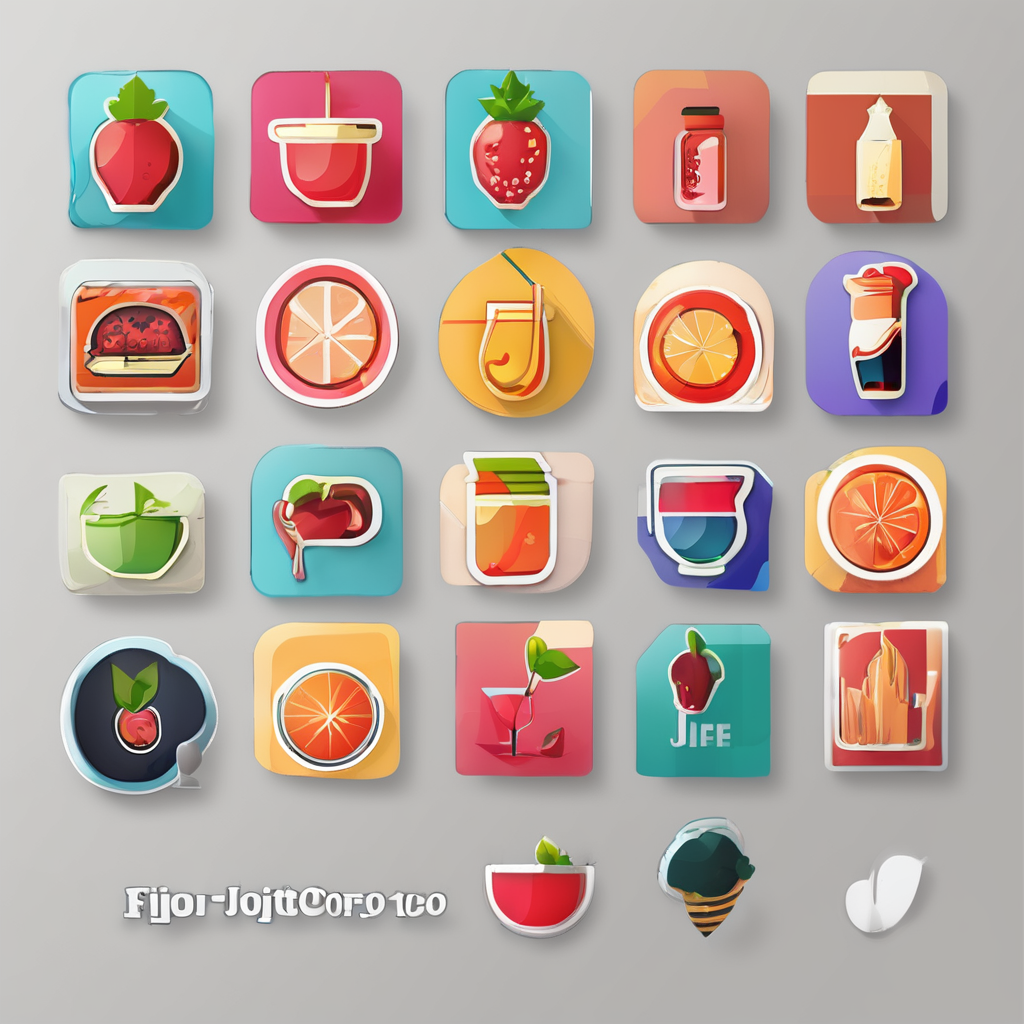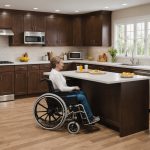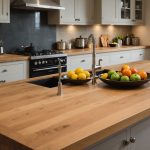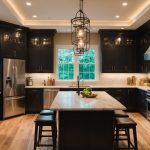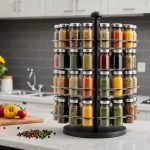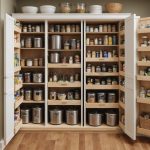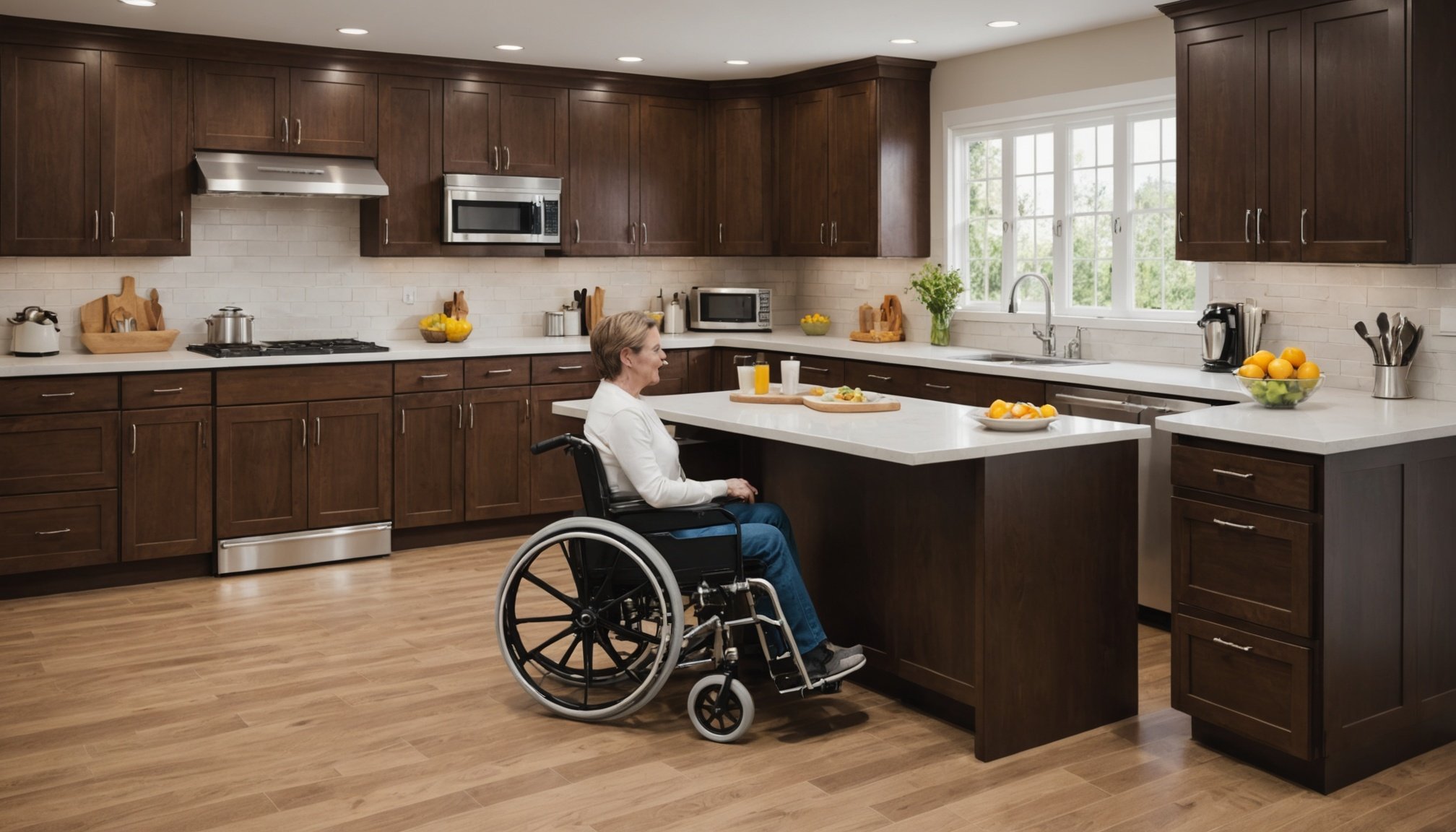Importance of Accessibility in Kitchen Design
Inclusive kitchen design is essential for creating wheelchair-friendly spaces that cater to the diverse needs of all users. Statistics reveal that a significant portion of the population relies on mobility aids, highlighting the necessity for accessibility features in home design. These features not only support wheelchair users but also enhance the overall functionality of a home, proving beneficial for everyone.
Prioritizing accessible design in kitchens ensures ergonomic convenience and safety for wheelchair users. For instance, lowering countertops and incorporating open shelving options address practical challenges faced by individuals with mobility constraints. Wheelchair-friendly spaces benefit from such thoughtful design considerations, facilitating ease of movement and usability.
Also to see : Maximize your kitchen”s charm: expert tips for positioning your ideal wine cooler
The advantage of inclusive kitchen design extends beyond individual accessibility; it also contributes to the home’s resale value. Homes that adhere to universal design principles appeal to a broader market, thereby reflecting a commitment to accommodating diverse needs. Additionally, when modifications are implemented with foresight, they prevent costly remodels in the future. In essence, inclusive and accessible design in kitchens is an investment that yields practical benefits and supports a dignified lifestyle for all residents, regardless of mobility status.
Key Design Principles for Accessible Kitchens
Creating an accessible kitchen begins with understanding universal design principles. These principles focus on designing spaces that are usable by all people without the need for adaptation. In kitchen settings, this means considering the diverse requirements of all users, including those with mobility challenges. By adhering to accessibility standards and guidelines, kitchens can be transformed into functional and welcoming environments for everyone.
In the same genre : Mastering multi-zone kitchen design: your essential guide to creating spaces for varied cooking experiences
One core principle is ensuring an inclusive layout. This involves strategically positioning elements within the kitchen to accommodate various needs while maintaining efficient flow. For example, placing sinks and stoves at a height that is convenient for wheelchair users ensures they can be used independently.
Space planning is another critical component, as it determines how easily individuals can navigate through the kitchen. The placement of furniture, counters, and appliances should allow for ample maneuverability, reducing the risk of unnecessary strain or accidents.
Through these design principles, kitchens become safer and more usable spaces. This approach not only supports individuals with accessibility requirements but also creates a more adaptable and liveable environment for all residents, enhancing the overall quality of home life.
Layout Considerations for Wheelchair Users
Designing a kitchen layout for wheelchair users requires careful consideration to ensure ease of movement and accessibility. One crucial aspect is ensuring clear pathways that allow for smooth manoeuvrability. The space between counters, appliances, and furniture should provide ample room, ideally a minimum of 150 cm (5 feet), to accommodate turning radii for wheelchairs. This ensures users can navigate the kitchen comfortably without obstruction.
Practical space planning is vital in these settings. Consider integrating fixtures like fridges, ovens, and dishwashers at heights that enable straightforward access. This not only supports usability but reduces the risk of strain or injury. Positioning such appliances strategically enhances independence and efficiency.
Another key element in kitchen layout is the proper placement of fixtures. For example, installing sinks with knee space underneath allows wheelchair users to perform tasks comfortably. Additionally, ensuring the stove controls are at a reachable distance further enhances the practicality of the kitchen.
By focusing on these layout considerations, wheelchair users can enjoy a fully functional kitchen that caters to their unique needs, promoting a more inclusive and independent lifestyle.
Counter Height and Work Surface Solutions
Designing accessible work areas in kitchens involves careful consideration of counter heights and surfaces that accommodate wheelchair users. Standard countertop heights often prove challenging for individuals relying on mobility aids. Hence, setting the counter height between 76 cm and 86 cm (30-34 inches) is recommended to allow comfortable use. Ensuring this adaptability encourages greater independence and reduces the need for external assistance.
Adjustable-height counters are a modern innovation offering flexibility. These allow users to alter the counter height with ease, ensuring an ergonomic workspace that can accommodate various tasks. Built with hydraulic or electronic mechanisms, these counters can seamlessly transition from meal prep to cooking, supporting diverse needs efficiently.
For optimal ergonomics, incorporating varied work surface solutions aids in catering to different culinary tasks. Examples include roll-under countertops and pull-out shelves, designed to support both seated users and individuals standing. These surfaces provide balance, preventing any discomfort or strain during daily activities.
These thoughtful adaptations of counter heights and accessible work areas enhance the usability of kitchen spaces, fostering an environment where all users can engage in cooking activities comfortably and without hindrance.
Appliance Choices for Enhanced Accessibility
In pursuing accessible appliances, it’s key to select user-friendly features that cater to wheelchair users’ needs. These appliances often include ovens with side-opening doors, allowing easier access without the need to reach over a hot surface. Additionally, dishwashers with drawers instead of traditional doors provide more convenient access.
When choosing kitchen gadgets, consider models with controls that are easy to read and use. Large, tactile buttons, as well as audio prompts, can significantly enhance the user experience for individuals with mobility challenges. Smart technology is increasingly prevalent in accessible kitchens, with innovations such as voice-activated controls and apps to manage appliances remotely. This integration allows for greater independence and personalization in managing cooking tasks.
Consider other practical additions like induction cooktops which stay cool to the touch, reducing the risk of burns. Height-adjustable microwaves and refrigerators further support accessibility, offering the flexibility needed for various users’ requirements. These thoughtful choices transform the kitchen into a space where everyone can enjoy cooking, ensuring functionality without sacrificing style or efficiency. Adapting to kitchen technology elevates accessibility and encourages independence, making the kitchen a more inviting environment for all.
Storage Solutions to Maximize Access
Designing a kitchen with accessible storage solutions is pivotal to enhancing usability, especially for wheelchair users. Cabinetry and shelving heights should be carefully considered, taking into account the user’s reach. Lowering cabinet heights and installing pull-down shelves can make accessing kitchen tools and ingredients much easier. These practical adjustments significantly reduce the need to overreach, promoting a safer and more efficient kitchen environment.
Innovative storage solutions, like pull-out drawers and lazy Susans, maximize available space while ensuring everything remains within easy reach. These designs not only improve functionality but also maintain an organised kitchen setup. Accessibility can be further enhanced by implementing transparent cabinet doors or using open shelving, allowing users to easily identify contents without having to rummage through items.
Another thoughtful addition includes providing accessible pantry solutions. Consider installing rolling carts or wire baskets with extendable arms to bring items to the user. This is particularly practical for heavier goods or bulk storage, making them manageable for individuals with mobility challenges. By prioritising kitchen organisation through these innovations, kitchens can become more inclusive, supporting diverse user needs while maintaining stylish and practical design aspects.
Safety Features to Include in an Accessible Kitchen
Incorporating kitchen safety features is paramount in creating environments where wheelchair users can operate with confidence. Hazard reduction starts with slip-resistant flooring, which can prevent accidents on wet or greasy surfaces. Consider using materials like textured tiles to enhance grip. Furthermore, the instalment of stoves and countertops with rounded edges can reduce injury risks.
Ensure that all entrances and pathways remain free from obstructions, thus facilitating smooth passage. Lever handles on doors and faucets are preferred over traditional knobs, offering ease of use for individuals with limited hand strength. Integrating adequate task lighting is crucial for preventing accidents and ensuring visibility during cooking chores, particularly near stoves and sinks.
Safe design often includes visual or sensory alerts that notify users of activated appliances or potential risks. For instance, cooktops with hot surface indicators can avert unintended burns.
Lastly, employing smart home technology enables remote appliance control and early warning systems for smoke or gas leaks. This not only enhances safety but promotes independence, enabling users to confidently navigate their kitchen space. Such features seamlessly amalgamate practical design with everyday kitchen safety essentials.
Aesthetic Considerations for Inclusive Kitchens
Creating a kitchen that marries stylish design with functionality is essential in crafting a welcoming, wheelchair-friendly space. It’s important to move beyond mere accessibility, ensuring that inclusive aesthetics are part of modern kitchens. Balancing user needs with appealing visual elements not only enhances the environment but also uplifts the mood within the space.
Consider integrating soothing colours and diverse textures, which can transform the kitchen into an inviting area. Materials like matte finishes or earthy tones help in reducing glare and creating a calm ambiance. Such thoughtful design practices respect both the functional requirements and the personal tastes of the users.
Modern kitchens can also incorporate universal design elements seamlessly. This includes choosing cabinets with sleek handles that are easy to grip and selecting appliances in sophisticated finishes that complement the overall design. These adaptations don’t only deliver usability but also maintain an elegant aesthetic.
Drawing inspiration from real-life case studies, kitchens can shine with both inclusive design and style. Accessible kitchens filled with personality demonstrate that functionality and beauty are not mutually exclusive. Embracing both can lead to environments that are as functional as they are visually delightful.
Case Studies and Real-Life Examples
The importance of accessible kitchen designs is vividly showcased through various real-life examples that offer both practical insights and design inspiration. These projects highlight how thoughtful planning and creative solutions can seamlessly integrate functionality and style, meeting diverse needs.
One notable project involved a family renovating their kitchen to create an inclusive environment for a member who uses a wheelchair. By lowering countertops and installing pull-out shelves, the kitchen became a space where all family members could easily participate in cooking activities. This adaptation not only improved usability but significantly enhanced the family’s dining experience.
Another example features a designer who embraced universal design principles by incorporating sliding doors and height-adjustable countertops. This approach ensured accessibility without compromising on aesthetics, illustrating how modern kitchens can be inclusive and stylish.
These case studies exemplify the successful implementation of practical examples that prioritize accessibility. They underscore the transformative impact of inclusive kitchen design, motivating homeowners and designers to craft spaces that are inviting and functional for everyone. These real-life examples serve as a beacon, demonstrating that accessibility need not come at the expense of beauty and style in a home.
